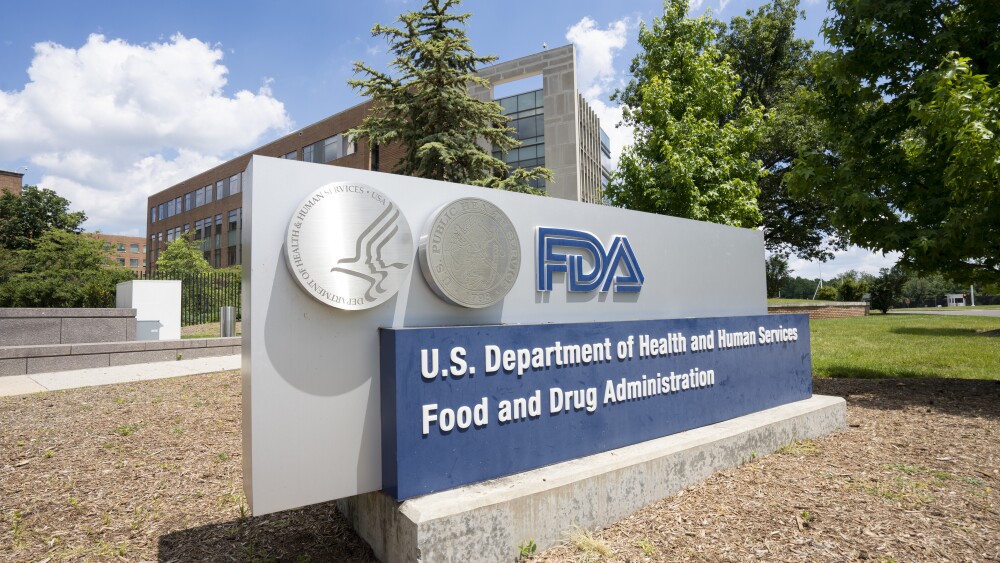Following up on previous, dimly received issuances, a new set of ideas published by the FDA to streamline regulatory pathways for cell and gene therapies ‘for small populations’ is receiving a warmer welcome—but experts warn it will take more to turn the tide for the fraught therapeutic space.
The FDA has spilled a lot of ink communicating its desire to accelerate therapies across a range of diseases. To date, it has mostly been just that, talk, according to observers. But a new set of draft guidance documents for cell and gene therapies has piqued new interest.
The documents, released last week, outline ways in which the agency plans to streamline approval pathways for cell and gene therapies (CGT), especially given the “urgent need for safe and effective” medicines to address severe conditions affecting “small populations.” This followed the announcement on Sept. 3 of the Rare Disease Evidence Principles (RDEP) framework, which the FDA said would allow companies to file for regulatory approval of a therapy using only a single-arm trial—something experts argued was already the case for many new drug applications.
“That earlier document seemed like it was not news,” Craig Lipset, clinical innovation lead at the Buffalo Initiative, a patient-led nonprofit drug development organization, told BioSpace. “This new document goes a click further.”
Perhaps the biggest change the new guidance offers for makers of cell and gene therapies is the possibility of self-controlled trials, where a patient’s baseline before treatment can be used as a kind of control for the trial, as opposed to a placebo. The draft recommendations, which are split into three areas, also describe the possibility of externally controlled studies—those that use historical or real-world data from patients who did not receive the drug as a comparison, rather than (or on top of) a control arm, in new drug applications.
“Traditional development paths for rare diseases can be slow and costly,” Mark Veich, CEO of Advancium Health Network, told BioSpace. “This particular guidance document focusing on innovative trial diseases speaks to me.”
Single arm trials using patients as their own controls is “game changing,” according to Veich, who was pleased with what he saw as a concrete attempt to meaningfully grease the wheels for hard-to-treat diseases.
“I think the accelerated innovation for underserved conditions using real-world data as controls could really drastically cut development timelines,” he added.
Pam Tenaerts, chief medical officer at Medable, which creates platforms and tools for clinical trials, told BioSpace via email that the guidances act as validation that CGTs are different from other modalities, such as small molecules, and need to be treated differently. “The endorsement of decentralized data collection and real-world evidence reflects the agency’s recognition that CGT development requires more flexible approaches than conventional pharmaceuticals,” she said.
The FDA’s openness to external controls and data sources coming from outside a clinical trial are also a major step forward, according to Tenaerts.
She specifically pointed to the third guidance document, which focuses on post-approval methods and called the FDA’s detailed framework for using registries and electronic health records for post-approval monitoring “a significant advancement.”
“This addresses a major pain point for CGT companies facing 15-year follow-up requirements by providing alternatives to traditional post-market studies,” Tenaerts said.
Echoing sentiments made when the RDEP was released, Lipset was encouraged by the FDA’s energy on the subject. “[The new guidances] are reaffirming established practices, which in today’s world isn’t necessarily a bad thing,” he said, pointing to the raft of departures from the nation’s health and science regulators that have had the biopharma industry seeking clarity in leadership.
Analysts at Stifel agreed, positioning the new CGT guidances as a reassuring move that could ease the path for a therapeutic space that has been rattled by patient deaths, FDA leadership turnover and surprise rejections. The analysts specifically noted the safety saga around Sarepta’s Elevidys this summer, the rejections of Capricor Therapeutics’ Duchenne muscular dystrophy cell therapy deramiocel and Replimune’s engineered viral immunotherapeutic RP1 for advanced melanoma.
All those events “led to investor skepticism earlier this year due to uncertainty regarding this FDA’s regulatory flexibility,” Stifel wrote in a Sept. 29 note.
More Left on the Table
Nevertheless, there is still room for the federal government to do more, Lipset said. He specifically called out the need for Congress to renew the rare pediatric priority review voucher program, which was allowed to expire at the end of 2024.
Companies that secure approval for a therapy treating a rare pediatric disease are awarded a voucher that they can either use toward the priority review of another product or sell to another sponsor for much needed revenue.
“Some policymakers see it as a ‘handout’ but it’s really a brilliant model,” Lipset said. “I’m optimistic that we can bring that back to life.”
Lipset’s optimism may be well-placed. On Sept. 18, the House Committee on Energy and Commerce advanced a bill that would restart the program.
The Stifel analysts additionally highlighted the newly introduced Commissioner’s National Priority Voucher (CNPV), a similar type of expedited review voucher that can be issued to sponsors developing therapies that are “aligned with U.S. national priorities,” saying it signals the FDA’s interest in accelerating CGT therapies.
“All the while, FDA’s public comments regarding its desire to help expedite clinical development for rare disease—at the public cell and gene therapy roundtable and other forums—in addition to newly introduced programs,” such as the CNPV, “have been broadly viewed as positive for the space,” the analysts wrote in their September note.
From a clinical trial design standpoint, Lipset said there are still innovations the FDA has left on the table. “Synthetic control arms and digital twins are other options,” he noted. The former is a statistical method for creating external controls using outside data, while the latter is a digital version of a patient, using patient data to essentially model what would happen to that patient if they did not receive a treatment, to create a type of self control.
But Lipset cautioned that just redesigning clinical trials is not in itself a panacea that will turn the tide for a CGT space struggling with commercialization and investment challenges. Even pharmaceutical giants are facing hurdles. Take Takeda, which this week shut down its cell therapy unit altogether.
“Traditional biopharma models necessitate getting return on the investment,” he said. “When manufacturing costs are extreme, it’s hard for us to realize a return that society can tolerate. Even a more efficient clinical trial design won’t help.”








